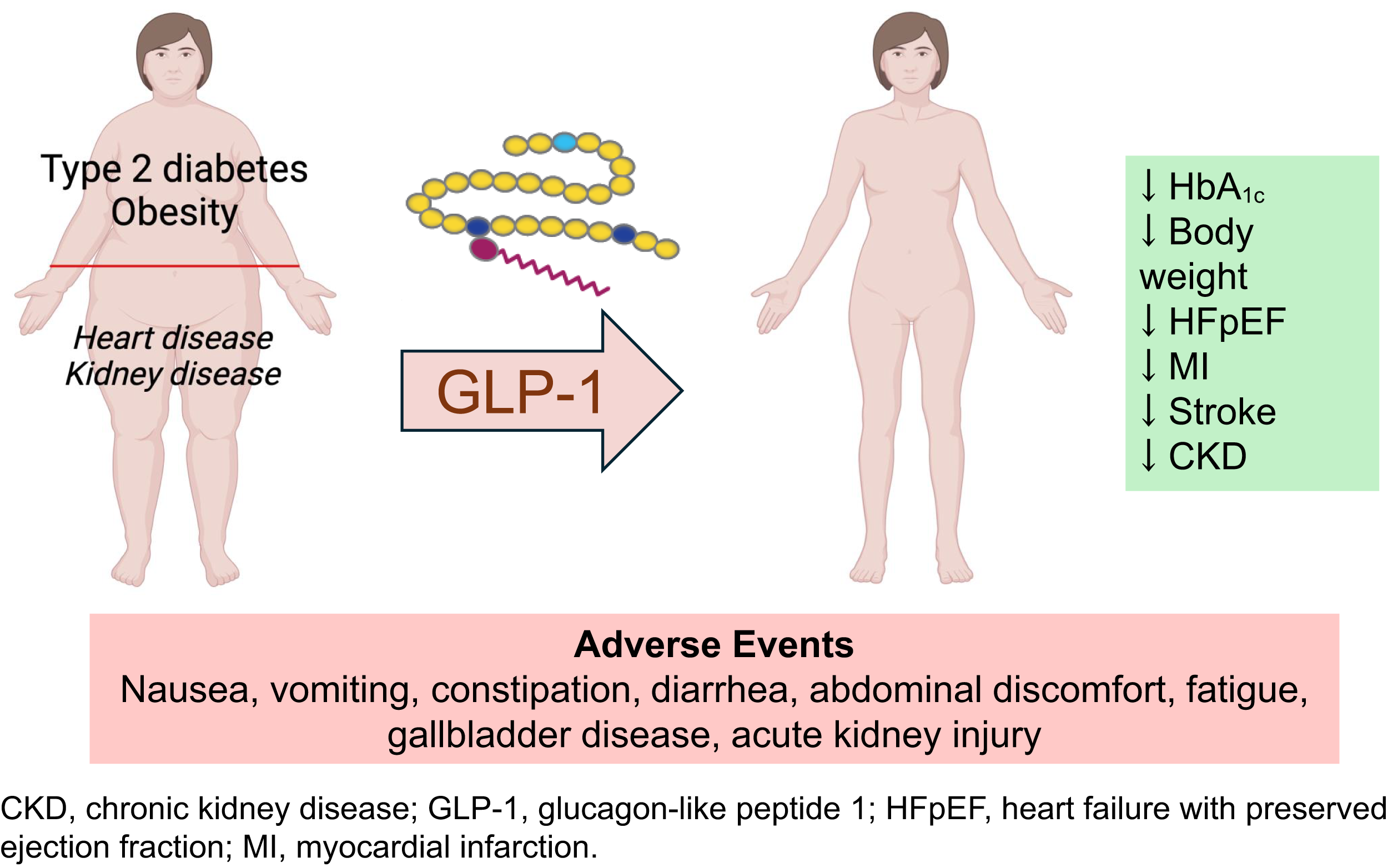- Daniel J. Drucker; Efficacy and Safety of GLP-1 Medicines for Type 2 Diabetes and Obesity. Diabetes Care 2024; dci240003. https://doi.org/10.2337/dci24-0003
GLP-1 RA drugs for T2 diabetes and obesity
GLP-1 RA drugs promise to revolutionise diabetes and obesity therapy. But further studies are needed on adverse effects and new uses.
Translated from the original Italian version.
The GLP-1 RA drug class
Daniel J. Drucker's article, published in Diabetes Care, discusses the development and use of GLP-1 RA (glucagon-like peptide-1 receptor agonists) drugs for the treatment of type 2 diabetes and obesity. These drugs, which include exenatide, liraglutide, semaglutide and tirzepatide, have demonstrated significant benefits not only in glycaemic control and weight loss, but also in reducing cardiovascular events and kidney disease.
For the past 19 years, GLP-1 RAs have been used mainly for type 2 diabetes and, for the past 10 years, also for obesity. The article also explores new potential indications for these drugs, such as metabolic liver diseases, neurodegenerative diseases and peripheral vascular disorders.
Results in diabetic and obese patients
With regard to type 2 diabetes, GLP-1 RAs have shown superior efficacy in glycaemic control and weight loss compared to other drugs, such as dulaglutide. Clinical studies have shown that semaglutide and tirzepatide are particularly effective in reducing HbA1c and body weight in patients with type 2 diabetes. In addition to improving glycaemic control, GLP-1 RAs have been shown to significantly reduce major adverse cardiovascular events (MACE), including non-fatal heart attacks, non-fatal strokes and cardiovascular deaths.
These drugs also reduce all-cause mortality and hospitalisations for heart failure. In addition, GLP-1RA have renal benefits by reducing albumin excretion and slowing the reduction of glomerular filtration rate in patients with type 2 diabetes.
In the treatment of obesity, higher doses of GLP-1 RA, such as semaglutide 2.4 mg once weekly, demonstrated significant weight loss (12-15%) in individuals without type 2 diabetes. Tirzepatide produced a weight loss of up to 20% in obese patients without diabetes. Furthermore, in individuals with obesity and cardiovascular disease, semaglutide reduced non-fatal cardiovascular events by 20%, with a significant reduction in heart attacks.
Risks and benefits of GLP-1 RA drugs
The article discusses the benefits and safety issues associated with GLP-1 RA. On the benefits side, these drugs are very effective in reducing weight and improving glycaemic control, with additional benefits for cardiovascular and renal health. In addition, there are ongoing clinical trials exploring the use of GLP-1 RA for new indications, such as neurodegenerative and metabolic diseases.
Regarding safety, the most common side effects of GLP-1 RA are gastrointestinal in nature, including nausea, vomiting, constipation, and diarrhoea, which occur in 40%-65% of patients. Other risks include gallbladder disease, acute kidney injury and potential cancer risks, although these have not yet been conclusively proven. Although rare, there are reports of neuropsychiatric events and sarcopenia, which require further investigation.
GLP-1 RA: further research needed
The article concludes that despite the proven efficacy of GLP-1 RAs in the treatment of type 2 diabetes and obesity, continued research is needed to explore new uses and ensure the long-term safety of these drugs. Continued innovation and development of new molecular entities based on the action of GLP-1 RA will offer further opportunities for the use of personalised medicine approaches in improving the health of people with cardiometabolic disorders.
